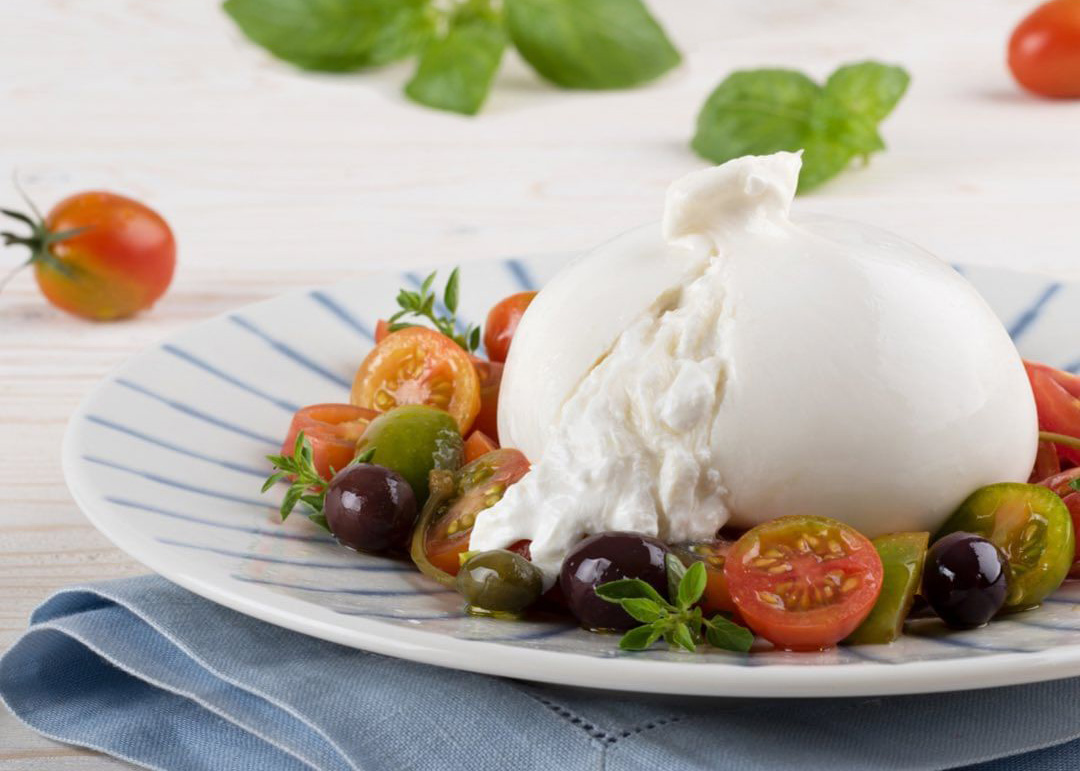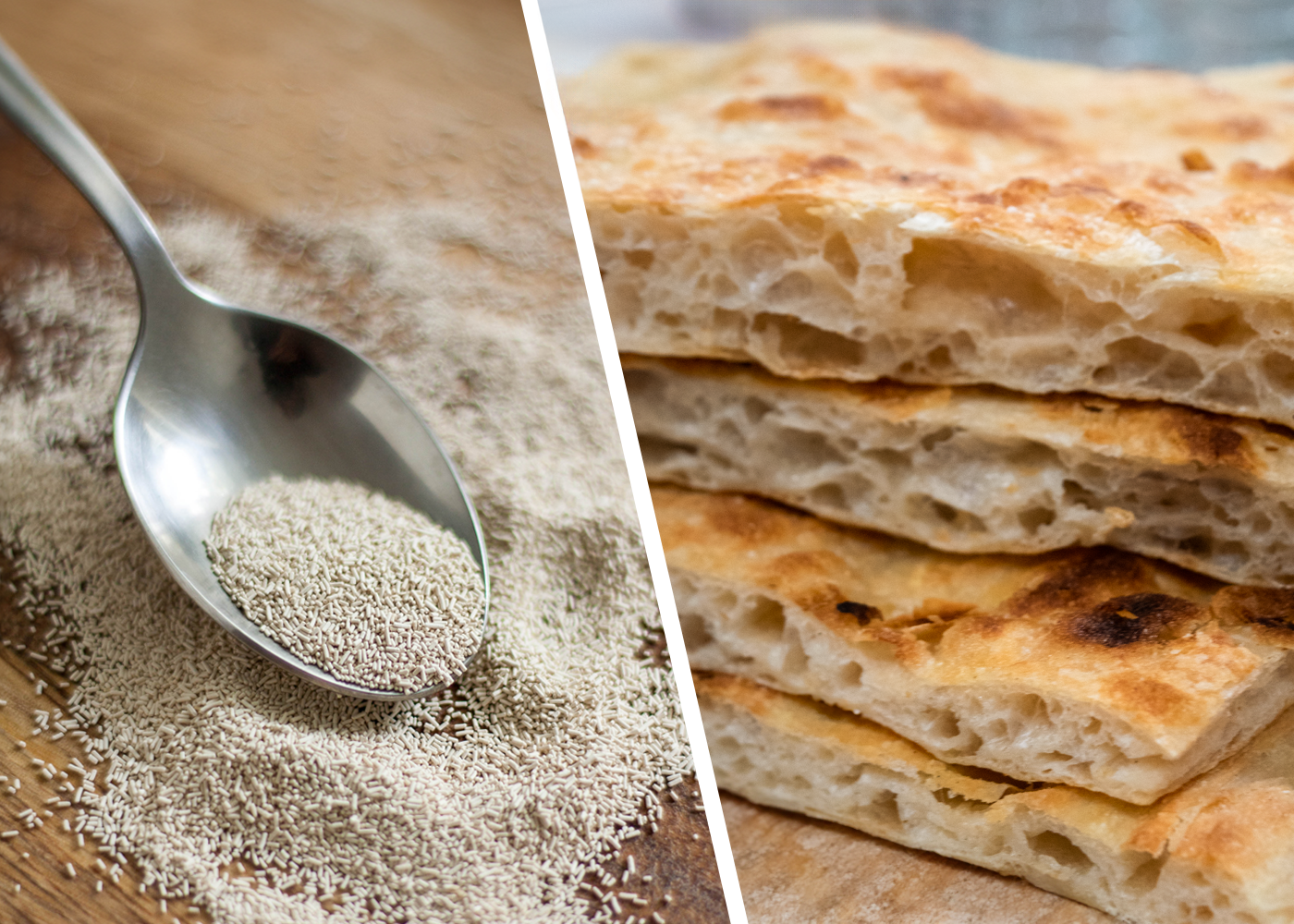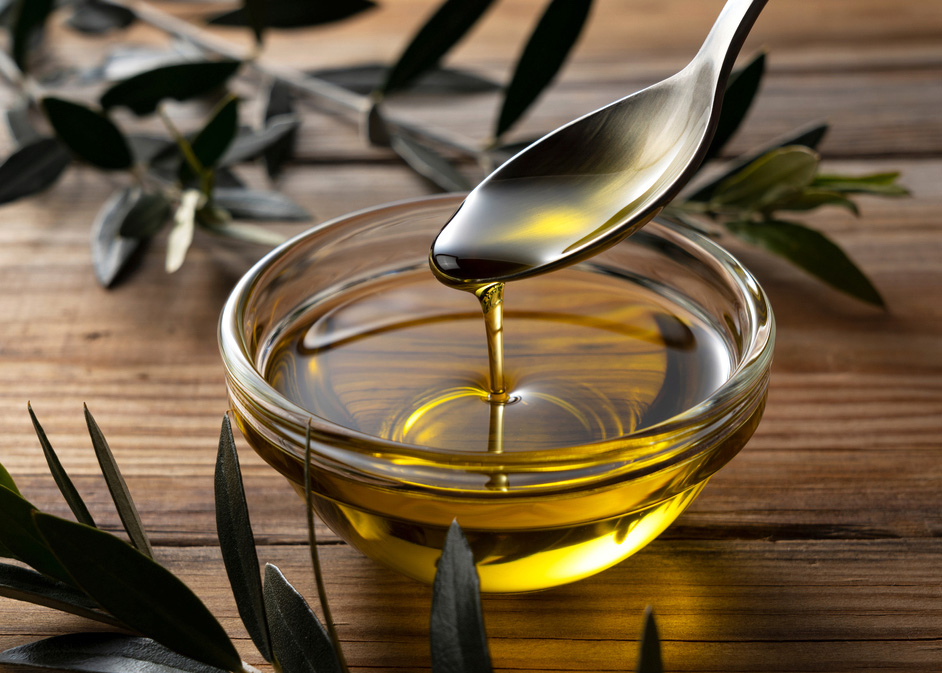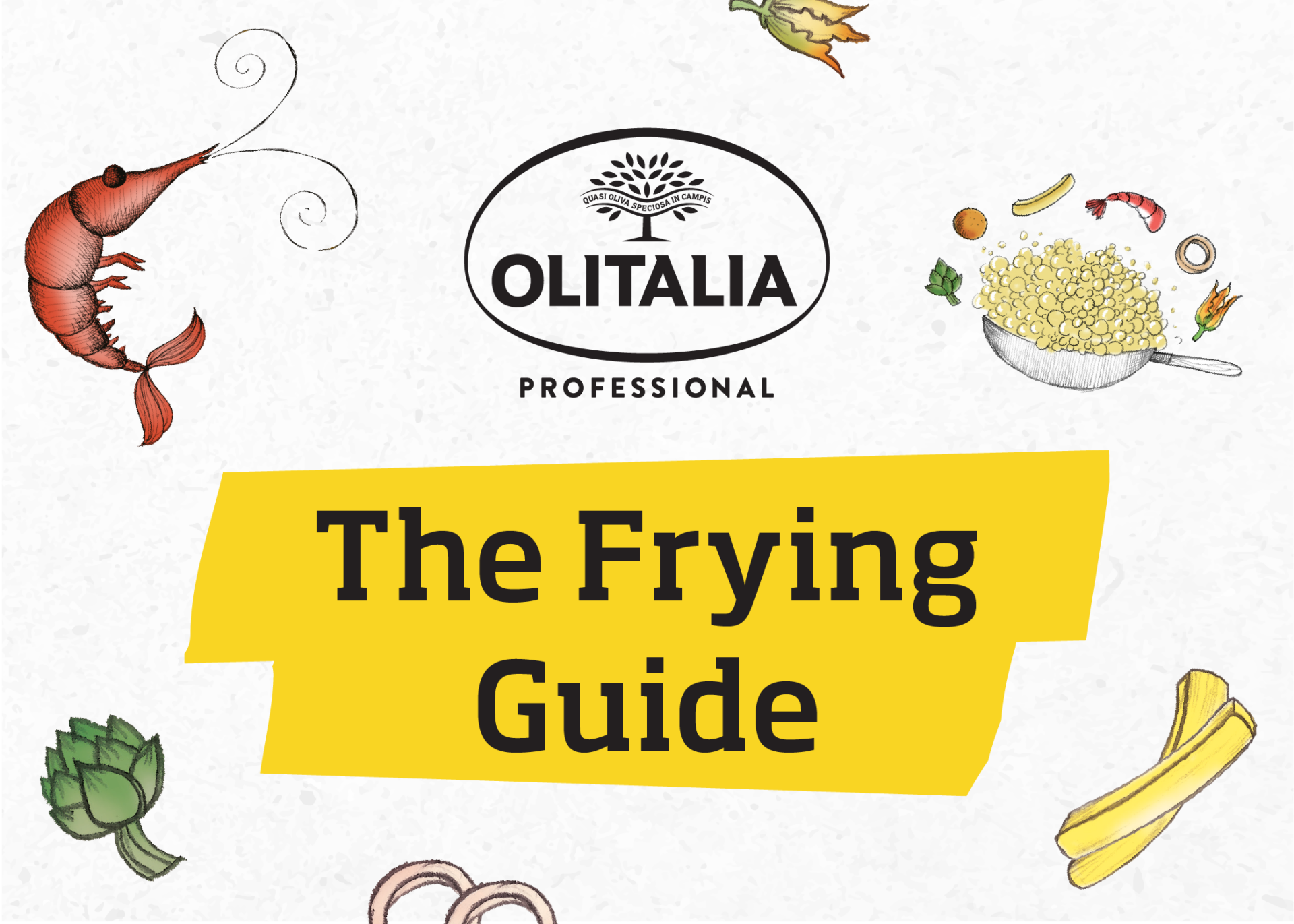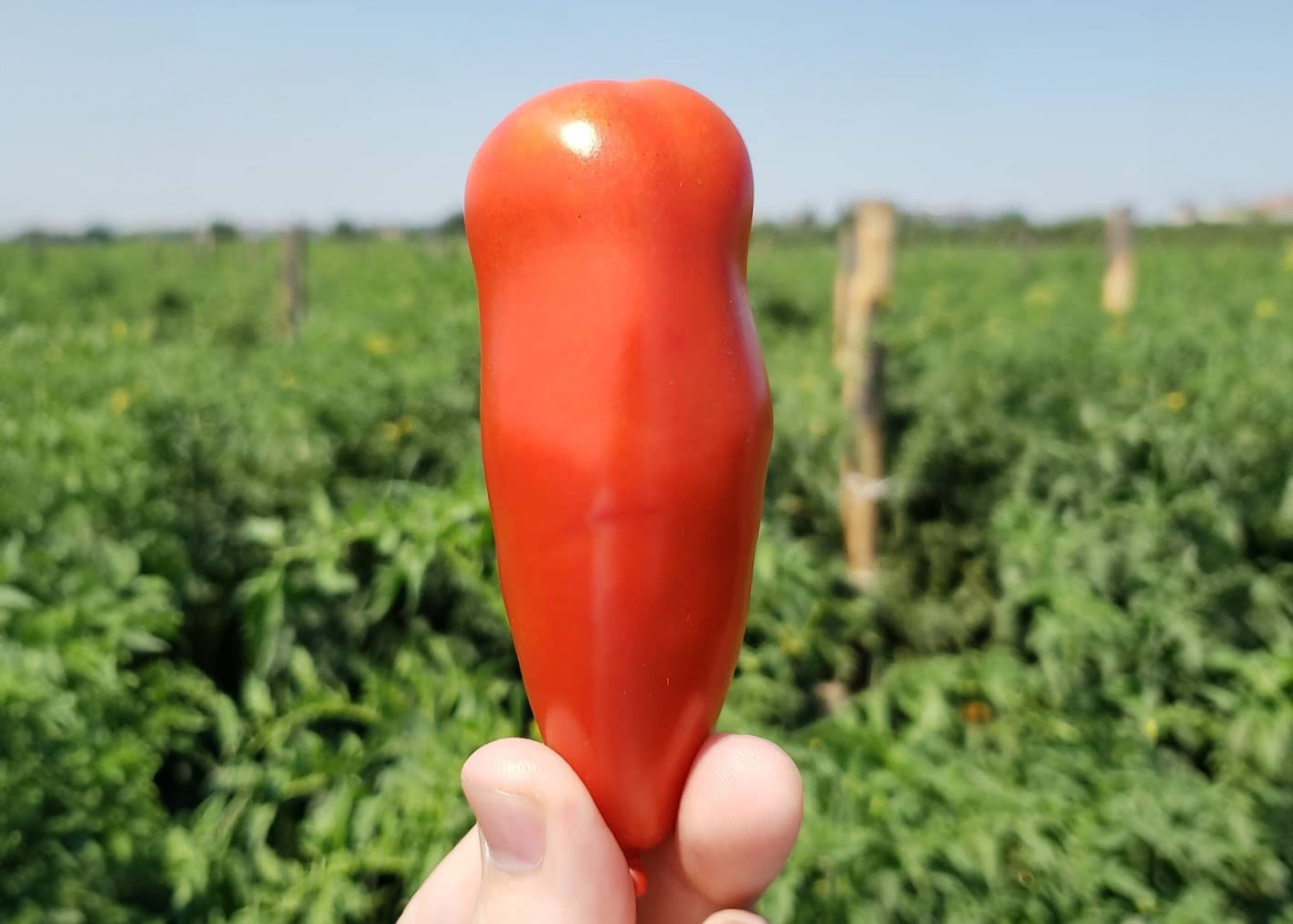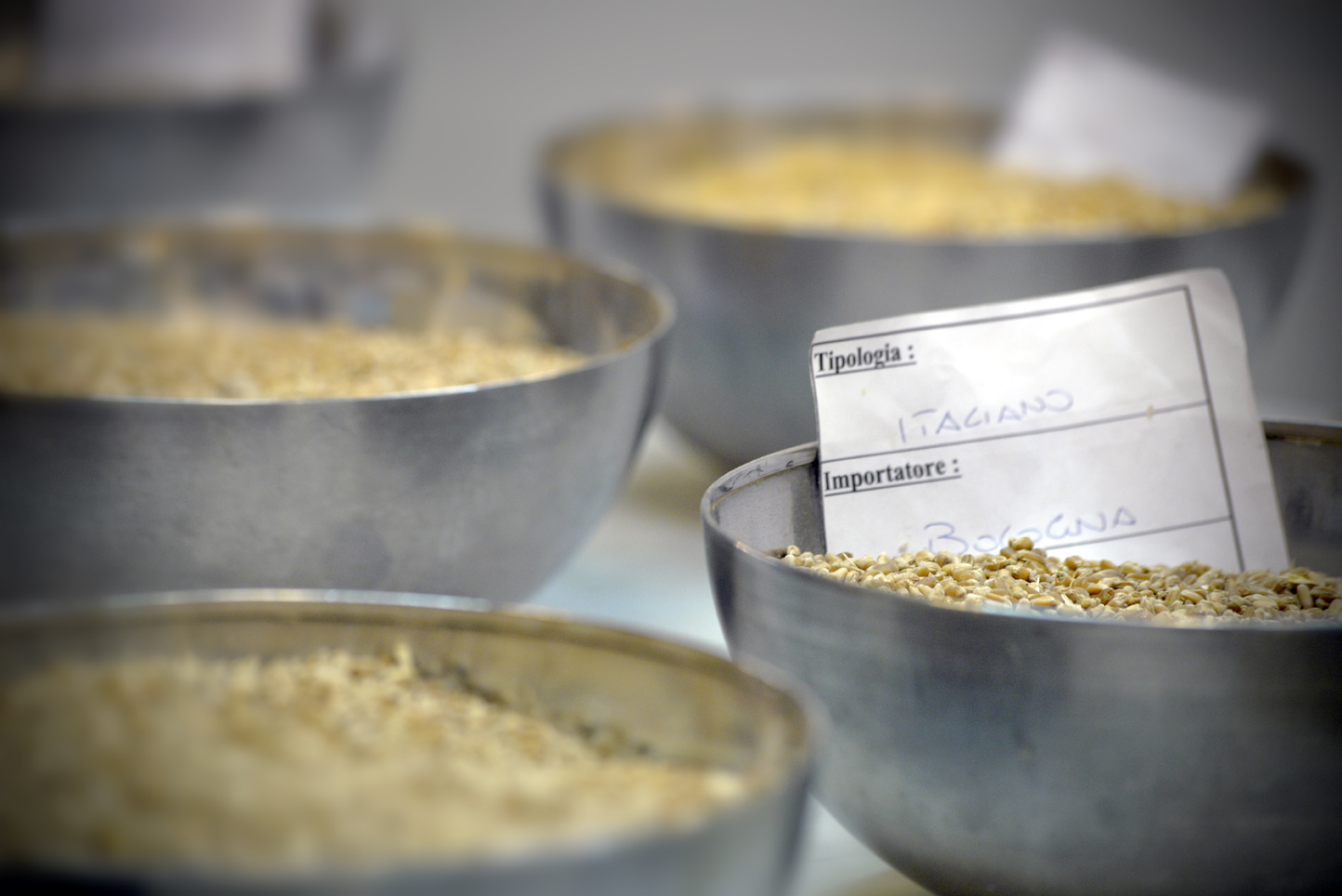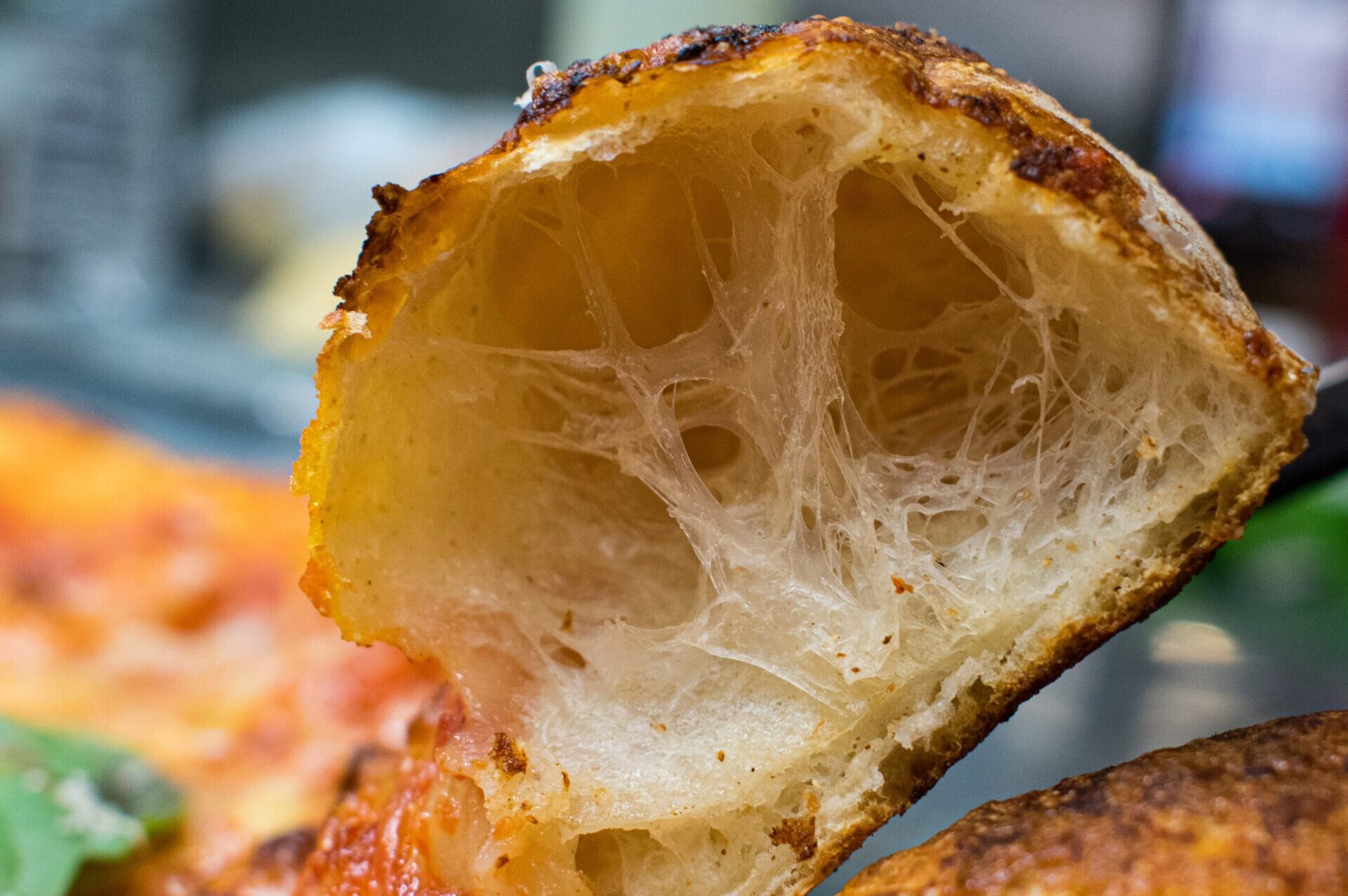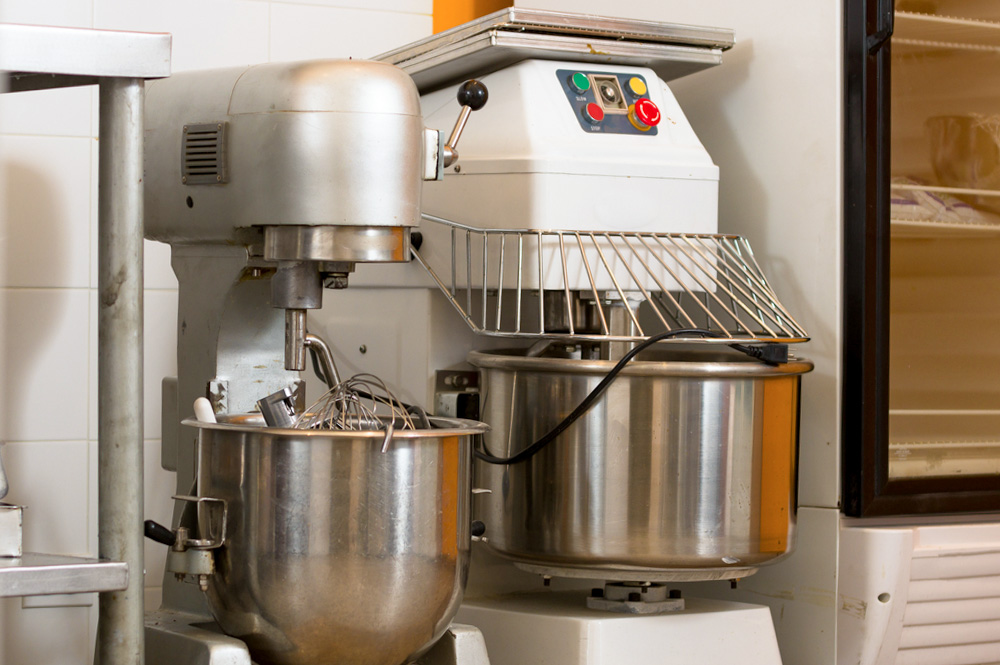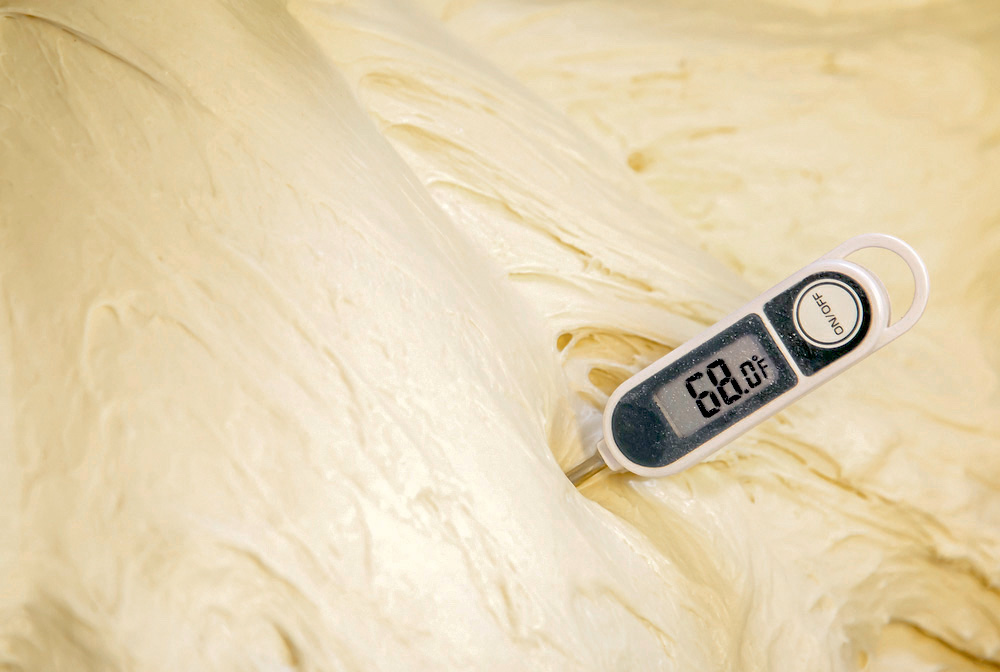Burrata is Booming
Burrata is taking American menus by storm, with a 30% rise in restaurant features over the last four years. But what makes this creamy Italian cheese so special—and how can chefs plate it beautifully, pair it creatively, and source it without compromising on authenticity? In this guide, we break down how to elevate Burrata beyond the basics. Get insider sourcing details on Deliziosa Burrata, the award-winning cheese crafted in the heart of Puglia and optimized for foodservice kitchens in the US.
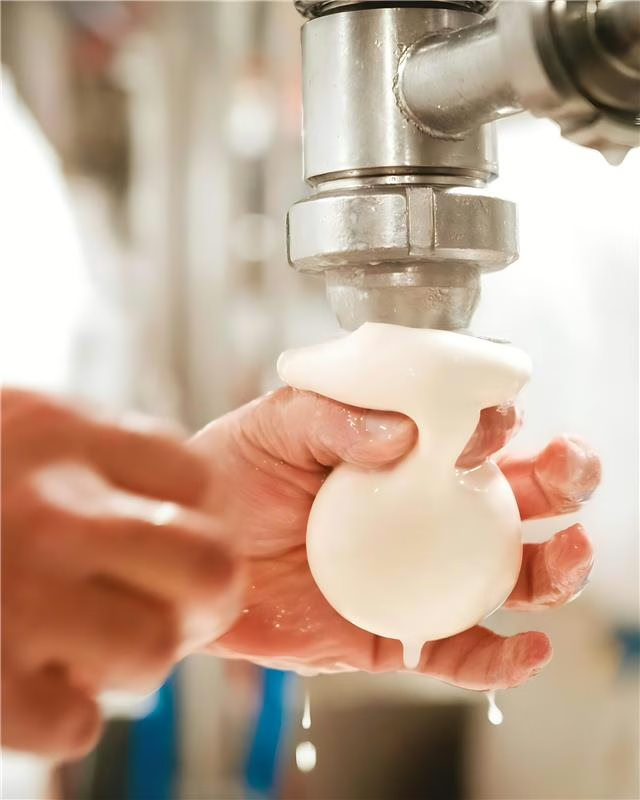
Burrata is Booming
Burrata is Booming
How to Serve It, Style It, and Source it Authentically
June 2025
In just the past four years, the rising demand for Burrata in the US has led to a 30% increase in restaurants featuring this fresh Italian cheese on their menus (Nation’s Restaurant News). Whether served as a pizza topping or a creamy appetizer, Burrata’s popularity shows no signs of slowing down.
But how can American chefs keep up with this growing demand without hopping on a plane to Italy? How can they present Burrata in fresh, creative ways beyond simply serving it alone? And more importantly, how do you make a white ball of cheese visually pop on the plate?
We’re glad you asked because we’ve got all the answers (no matter how cheesy they may be). It’s time to elevate your Burrata game and bring a true Italian experience to your menu.
What Makes Burrata So Special?
Authentic Italian Burrata is a delicate ball of mozzarella filled with rich stracciatella (a luxurious mix of fresh cream and cheese curds). It originated in Puglia and is still made there today using traditional methods passed down through generations. Because Burrata is a fresh cheese, how it’s sourced, processed, and served makes all the difference. True Burrata should be soft, creamy, and bursting with flavor—not rubbery or bland.
How to Make Burrata Shine on Your Menu
Because Burrata is so special, it deserves a seat at your restaurant’s table! So, here are a few creative and memorable ways to showcase Burrata on your menu.
- Burrata with Roasted Grapes and Balsamic Strawberries
Elevate your appetizer game with a sweet and savory pairing. Serve your creamy Burrata with oven-roasted grapes, balsamic-glazed strawberries, toasted hazelnuts, and a balsamic-thyme drizzle. Your guest will love the bright flavors, diverse textures, and stunning plate appeal.

- Fried Burrata & Arugula Salad
Take a crispy turn with this playful spin on tradition. Lightly fry your Burrata and set it atop a bed of fresh arugula, cherry tomatoes, extra virgin olive oil, and a balsamic reduction. It’s an American-inspired twist that delivers crunch, cream, and vibrant flavor in every bite.
- Burrata Neapolitan Pizza
Sometimes going back to the classics is the boldest move. This traditional Neapolitan pizza—made with authentic dough, rich tomato sauce, and finished with Burrata—is proof that simplicity can be unforgettable. When your Burrata is this good, it becomes the standout ingredient that sets your pizza apart on the menu.

How to Plate Burrata Like a Pro
Plating Burrata can be a challenge, especially in a fast-paced kitchen environment. Like a perfectly poached egg, Burrata is incredibly delicate. That’s why it should only be cut open at the very last moment, just before serving. In fact, slicing Burrata tableside can be a great way to elevate the dining experience and give your guests a front row seat for a creamy and indulgent reveal. Another challenge? Burrata is all white which can look visually flat on a plate. If you’re serving it as a standalone appetizer (which it absolutely deserves to be), think about contrast. Garnish with fresh basil, bright tomatoes, roasted vegetables, or a drizzle of high-quality Italian olive oil to bring both color and complementary flavor. These elements not only enhance the Burrata’s naturally milky, creamy taste but also elevate the entire visual experience for your guests. (Find a perfect plating example here).
Where to Source Authentic Italian Burrata
As a third-generation food importers, we are proud to bring only the most authentic and fresh Italian products to the US. When it comes to Burrata, we turn to the experts at Deliziosa, a traditional cheese producer based in the heart of Puglia
Their burrata was crowned Best Burrata by the Italian National Association of Cheese Tasters and also took home the gold medal for Best Burrata of 2024 at the World Championship Cheese Contest—distinctions that reflect the exceptional craftsmanship and quality behind every piece. Each Burrata is handcrafted by master cheesemakers using milk collected daily from selected farms within a 30km radius of the dairy. This local sourcing not only ensures peak freshness and flavor but also reflects Deliziosa’s and our deep commitment to the land, animals, and environment.
Built for Foodservice
Deliziosa’s Burrata is built for food service! It is individually cupped and packed in 125g portions—with 8 portions per case—making it ideal for portion control, plating efficiency, and minimizing waste in professional kitchens. Whether you’re serving Burrata as an appetizer or a premium pasta topping, this convenient format ensures every portion is consistently fresh and ready to impress.
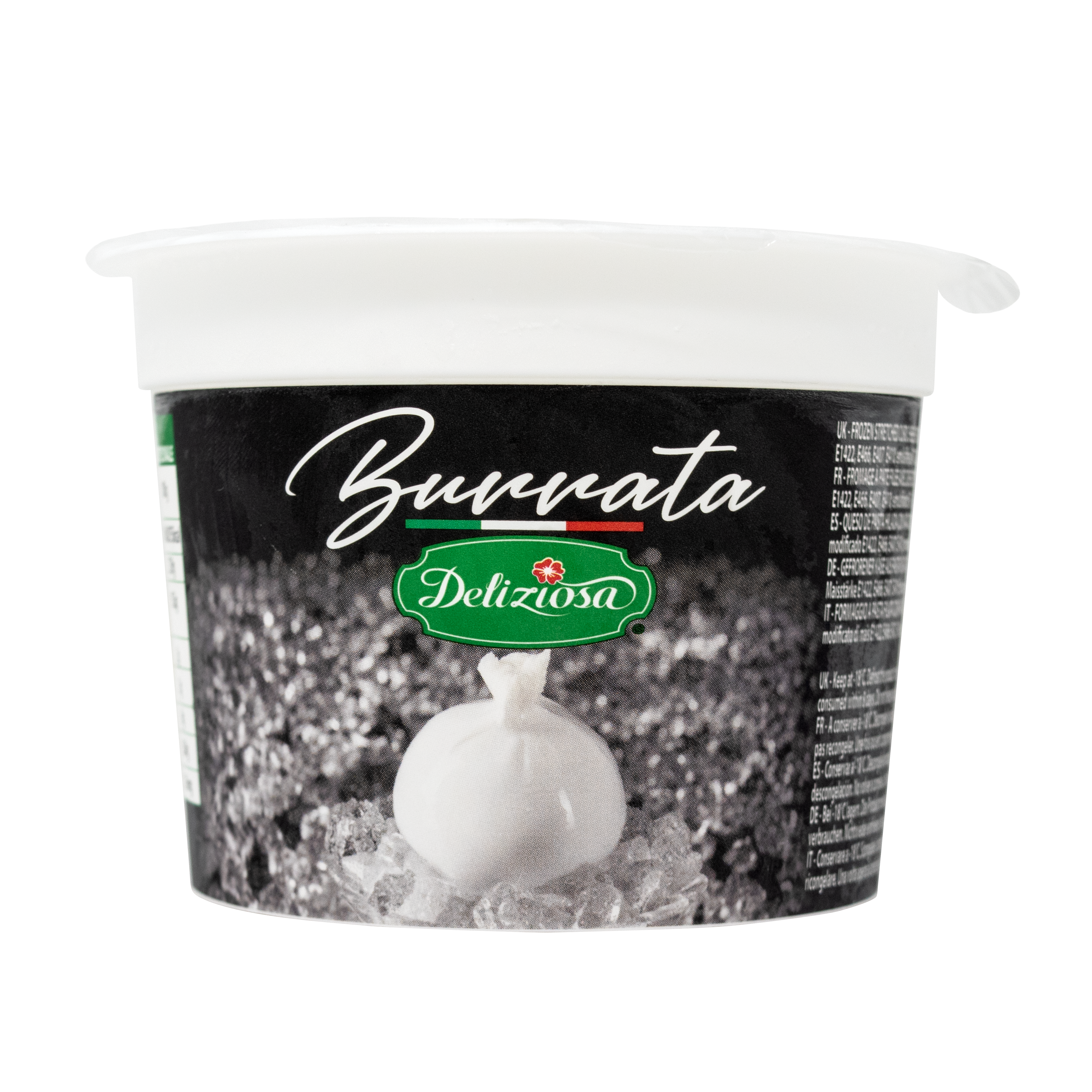
Additionally, Deliziosa Burrata arrives frozen, locking in peak freshness at the moment of production. Once defrosted, it’s just as creamy, delicate, and flavorful as the day it was made. It also has an impressive 18-month shelf life, so you can bring Italian flair to your menu all year round without worrying about spoilage!
Quick Storage & Defrosting Tips:
- Store frozen for up to 18 months.
- For best results, defrost in the refrigerator for 48 hours.
- For quicker use, submerge sealed product in cold water for 2–3 hours.
- Once thawed (in sealed packaging), consume within 8 days.
- After opening, consume the product entirely.
At the end of the day, Deliziosa’s cheeses are more than products. They’re culinary expressions of Puglia’s rich heritage. From their award-winning flavor to their sustainable practices and chef-friendly packaging, Deliziosa Burrata is the perfect way to bring Italy to your menu both deliciously and authentically.
Don’t believe us? Request a sample by visiting our Contact Us page!
From Plate to Palate: Understanding Italy’s Creamy Cheese Treasures
From the rustic fields of Puglia to the bustling kitchens of American restaurants, burrata and stracciatella transcend geographical boundaries to weave their magic from plate to palate, beckoning us to savor the essence of Italy’s culinary excellence.
The Science of Airiness: How 100% Natural Dried Sourdough Transforms Dough
The marriage of this special blend of wheat and natural dried sourdough creates a symphony of textures, elevating crusts to a realm where crispiness becomes an art form.
The Best EVOO Alternative
As we navigate the culinary landscape of 2024, the escalating costs of Extra Virgin Olive Oil (EVOO) continue to cast a shadow over kitchens worldwide. Enter Olitalia’s TuttOlio, a revolutionary solution meticulously crafted to serve as a compelling alternative to EVOO across diverse culinary applications.
The Frying Guide
How you treat your oil can make all the difference when deep-frying. Everything from how you prepare the foods you are frying, how often you are filtering the oil, and how much oil is in the filter can impact the quality of the oil over time.
The San Marzano D.O.P.
San Marzano tomatoes are an Italian specialty. Grown in the Sarnese Nocerino Region of Italy, outside of Naples in the volcanic soil of Mt. Vesuvius, the climate, nutrient-rich soil, and sun all contribute to what makes these tomatoes so special.
The Flour Cheat Sheet
Not all flour is created equal. While it’s a staple ingredient you’ll find in almost every kitchen around the world, there is a lot of misinformation and misunderstanding about its different types and classifications, so it’s important to understand what it is.
Choosing the Right Frying Oil
What if we told you that fried foods don’t have to lead to illness, discomfort, or guilt? In Italy, fried foods are light, crispy, and airy. They’re easy to digest and don’t leave you laid out on the couch, moaning with regret.

